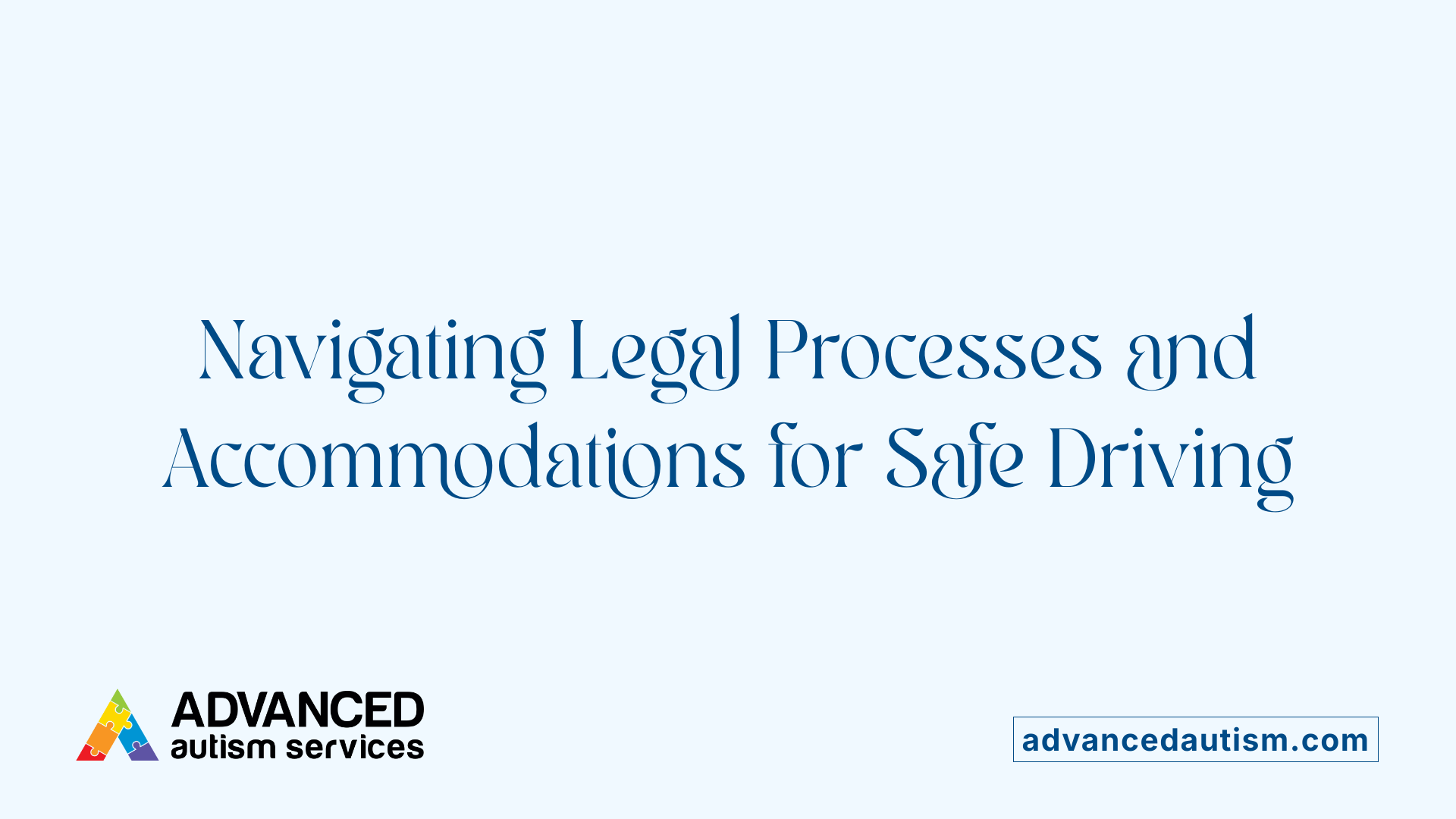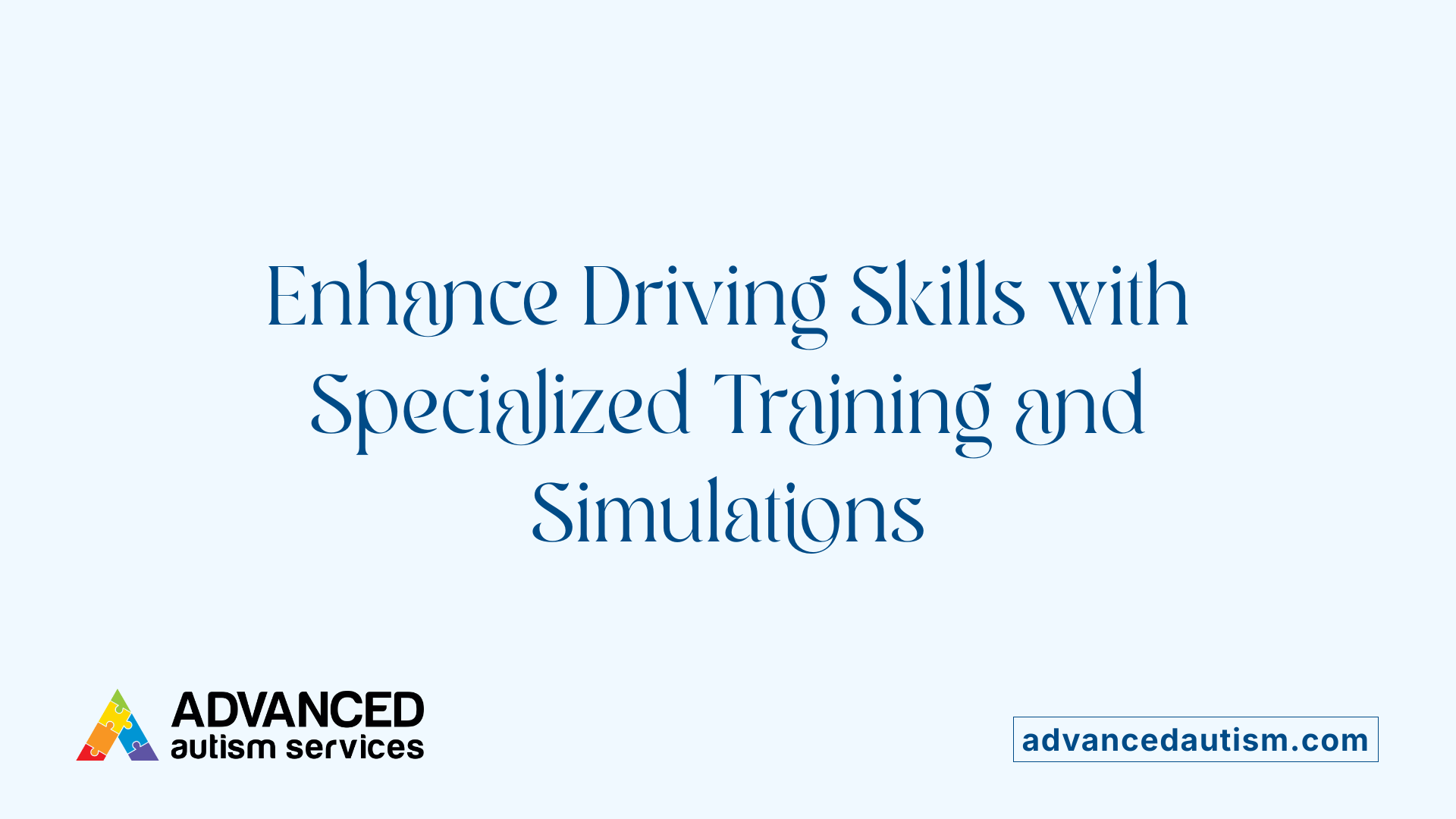Can Autistic People Drive?
Driving Independence and Autism: Navigating the Road Ahead
Understanding Autistic Driving Capabilities
The question 'Can autistic people drive?' is frequently asked by families, individuals, and professionals. While autism presents unique challenges, it is crucial to recognize that with appropriate support, many autistic individuals can and do learn to drive safely and legally. This article explores the complexities, strengths, legal considerations, available resources, and the experiences of autistic drivers to provide a comprehensive understanding of this significant aspect of independence.
Legal Frameworks and Licensing Regulations for Autistic Drivers

What are the legal requirements and licensing processes for autistic individuals to drive?
Autistic individuals are generally subject to the same licensing requirements as non-autistic drivers. This means they must meet standard criteria such as passing vision tests, knowledge assessments, and road skills evaluations regulated by their state or region.
While there are no federal laws that restrict autistic people from obtaining a driver’s license, some states provide specific options to support their safe driving efforts. For instance, certain states allow individuals to request an autism indicator on their driver’s license or to carry communication cards such as the Blue Envelope Program. These initiatives help law enforcement interact more understandingly during traffic stops.
Most jurisdictions require completion of a learner’s permit phase, followed by supervised practice hours, and finally, a road test. Autistic individuals often benefit from specialized instruction tailored to their needs, which can include visual aids, structured practice, and clear, literal communication. Supporting resources like occupational therapy or driver rehabilitation programs—such as those offered by The Ohio State University Wexner Medical Center—assist many in developing necessary skills.
Age requirements to obtain permits and licenses are consistent across populations, but some teens with autism are slower to start or complete licensure, often due to challenges with skills or confidence. However, encouragingly, research shows that autistic drivers tend to have similar or lower crash rates compared to their peers, especially when they receive appropriate training.
It’s advisable for families and individuals to contact local DMV offices for specific procedures. Many states have dedicated resources and accommodations, including extra testing time, visual supports, or online assessments. These efforts aim to ensure that autistic drivers can achieve safety and independence without unnecessary barriers.
Overall, with adherence to standard licensing processes and possible accommodations, autistic individuals can become confident, legal drivers, fully exercising their rights and mobility.
The Role of Specialized Support and Programs in Driving Education

Are there resources, support schemes, or programs available for autistic individuals learning to drive?
There are a variety of resources and programs designed to assist autistic individuals in their journey to becoming licensed drivers. Recognizing that autism affects each person differently, many tailored programs focus on developing essential driving skills in a safe and supportive environment.
One notable example is Ohio State University’s Driver Rehabilitation Program. This initiative provides customized training that breaks down complex driving tasks into manageable steps. It includes commentary during driving practice to enhance understanding and helps drivers prepare for emergencies. Similarly, East Carolina University has launched an Occupational Therapy Boot Camp focused on preparing autistic individuals for various life skills, including driving, with strategies to improve motor skills and sensory processing.
Educational resources are also available online. For instance, the "Learning to Drive with Autism" course, co-developed with autistic individuals, introduces beginners to the process of learning to drive. It emphasizes exploring driving as an option, understanding licensing requirements, and preparing for real-world situations.
Support programs frequently incorporate tailored assessments, such as virtual drives and simulations, to evaluate a person’s readiness without the risks of actual road practice. These virtual assessments, developed through projects funded by the Department of Defense, focus on evaluating executive functions, response times, and reaction to simulated driving scenarios. They help identify specific areas needing improvement, such as hazard recognition or multi-tasking.
In addition to training tools, many states offer resources like autism indicators, decals, symbols, or communication cards to promote understanding and safety during traffic stops or emergencies. Programs such as the Blue Envelope Initiative allow them to discreetly communicate their condition to law enforcement, thereby fostering safer and more accommodating interactions.
Overall, these specialized schemes and resources aim to build confidence, improve driving performance, and ensure safety for autistic drivers. They acknowledge individual differences and emphasize gradual exposure, positive reinforcement, and ongoing support to help autistic individuals develop the skills and independence they desire.
Unique Strengths and Considerations of Autistic Drivers
What strengths and unique considerations do autistic drivers have?
Autistic individuals often bring notable strengths to driving that can enhance their safety and performance on the road. These include a diligent adherence to traffic rules, which reduces risky behaviors and promotes safe driving practices. Many autistic drivers have exceptional memory for routes, allowing them to navigate familiar areas confidently and with less stress.
They also tend to pay close attention to their environment, noticing details that might escape others. This heightened environmental awareness can be advantageous in complex driving situations. Additionally, autistic drivers typically exhibit limited risk-taking behaviors, favoring caution over reckless shortcuts, which further contributes to safety.
One of the remarkable traits found in autistic drivers is their ability to recognize patterns deeply, which aids in anticipating road conditions and behaviors of other drivers. Their intense focus and attention to detail—sometimes termed hyper-focus—allow them to monitor their surroundings meticulously.
While these strengths can foster safer driving, some challenges need to be managed. Common hurdles include distractibility, sensory sensitivities, or difficulty interpreting social cues like gestures or body language of other drivers and pedestrians. These issues can be addressed through tailored training programs that incorporate repetitive practice, the use of simulators, and step-by-step instruction.
Research shows that, when given appropriate support, autistic drivers’ crash rates are comparable or even lower than those of their neurotypical peers. They are also less likely to have their licenses suspended or receive traffic violations, highlighting their potential for responsible driving.
By recognizing and leveraging their natural strengths, alongside personalized training, autistic individuals can develop confidence and competence behind the wheel. Support systems that focus on individual needs, such as specialized driver education and assistive strategies, can bridge the gap between potential and proficiency, enabling autistic drivers to thrive in their independence and everyday mobility.
Challenges Faced by Autistic Drivers and Strategies to Overcome Them
What challenges do autistic drivers face and how can they be addressed?
Autistic drivers encounter a variety of difficulties that can influence their ability to drive safely and confidently. These challenges include sensory sensitivities, such as being overwhelmed by noisy or busy environments, which can distract or unsettle them while driving.
They also often have trouble interpreting social cues and recognizing hazards, such as understanding the body language of pedestrians or predicting the actions of other drivers. Motor coordination issues and executive functioning difficulties, like planning, decision-making, and multitasking, further complicate driving.
Anxiety and lower confidence levels are common, especially in unfamiliar or complex driving scenarios. These emotional factors may cause hesitation or discomfort behind the wheel.
To mitigate these challenges, tailored training programs are essential. Such programs typically break down driving skills into smaller, manageable parts and incorporate simulation practices to build familiarity with real-world scenarios. Commentary from instructors during practice can help improve hazard detection and decision-making.
Occupational therapists and specialized driving instructors can adapt teaching strategies to suit individual needs. Sometimes, innovative solutions like virtual driving assessments are used to evaluate readiness without the risks associated with on-road testing. These tools help measure an individual's executive functioning and response to driving situations in a controlled environment.
Supporting autistic drivers also involves sensory accommodations, such as minimizing sensory overload during training or on the road. Gradual skill development, with consistent routines and familiar routes, helps build confidence and reduce anxiety.
Overall, with proper support, specialized training, and resources, many autistic individuals can successfully learn to drive. This not only fosters independence but also enhances their participation in community life, employment, and social activities. The combination of tailored approaches and ongoing support promotes safer driving experiences and improves quality of life.
Driving Safety Data and Research Insights
What research findings are available regarding autism and driving abilities?
Research on autism and driving abilities reveals a nuanced picture. Studies indicate that autistic individuals often encounter challenges in acquiring and executing driving skills. For example, they may require more time to learn driving, have delayed responses to hazards, and experience difficulty interpreting social cues such as gestures or signals from other drivers.
While some research shows autistic drivers are perceptive to hazards and pay close attention to their environment, they may struggle with complex social interactions on the road. This can sometimes lead to increased traffic violations or errors, but other assessments, especially those using simulated driving environments, report no significant difference in driving performance compared to non-autistic drivers.
Specialized training programs tailored for autistic drivers have shown promising results. These programs focus on improving tactical skills, hazard detection, and understanding traffic rules.
Occupational therapy is often employed to help develop personalized strategies to address specific challenges, such as motor coordination or executive functioning issues. These initiatives aim to foster safer driving habits and greater confidence.
Overall, current evidence suggests that with the right support, some autistic individuals can learn to drive independently. However, the overall crash risk and safety metrics compared to neurotypical drivers remain mixed.
Ongoing research continues to seek ways to improve driver rehabilitation and safety protocols for autistic drivers. The goal is to promote greater independence, reduce accidents, and ensure that more autistic individuals can participate fully in transportation options. As our understanding develops, tailored interventions and assessments are becoming more sophisticated, aiming to bridge the gap between potential and safety on the road.
Autonomous Vehicles and Future Perspectives for Autistic Drivers
How do autism traits impact driving skills and safety?
Autism traits can significantly influence how individuals drive and their safety on the road. Challenges often include motor coordination difficulties, issues with decision-making, executive functioning, and social communication skills. These can make recognizing traffic signals, interpreting hazards, and reacting to unpredictable events more complex.
For example, autistic drivers may struggle with slower hazard detection, particularly when it involves social cues like pedestrians or cyclists. Sensory sensitivities may also cause overload or distraction, complicating focus during driving. Emotional regulation issues, such as nervousness or anxiety, may impair concentration and decision-making.
Nevertheless, many autistic individuals possess strengths that promote safe driving, such as rule adherence and attention to detail. Specialized programs like occupational therapy can help mitigate difficulties by breaking down skills into manageable parts, offering real-time commentary, and preparing drivers for emergencies. These tailored approaches significantly support safer driving experiences.
While challenges vary among individuals, targeted assessments and training can enable many autistic people to drive safely. However, they might choose or need to limit their driving or use alternative options depending on their comfort and skill levels.
Promoting Safe and Inclusive Driving for All
Autistic individuals can and do drive safely, contingent upon individual readiness, tailored training, and the availability of supportive resources. Recognizing both the challenges and strengths inherent in autism allows for a balanced approach that fosters independence, safety, and community participation. Continued research, technological innovations like virtual assessments and autonomous vehicles, and awareness efforts are essential to ensuring inclusive mobility. As understanding deepens, more autistic drivers can access safe and supportive pathways to driving, ultimately enhancing their quality of life and social inclusion.
References
- Autistic People Can Drive: Here's What They Need to Know
- Autism and Driving | Teen Driver Source
- Autism and driving | Ohio State Health & Discovery
- Autism and driving: Ways to identify as autistic when driving
- driving - National Autistic Society
- Autism Drives
- Can Autistic People Drive? All You Should Know







